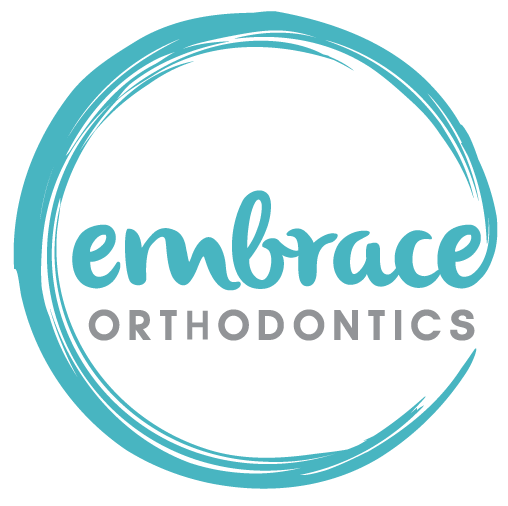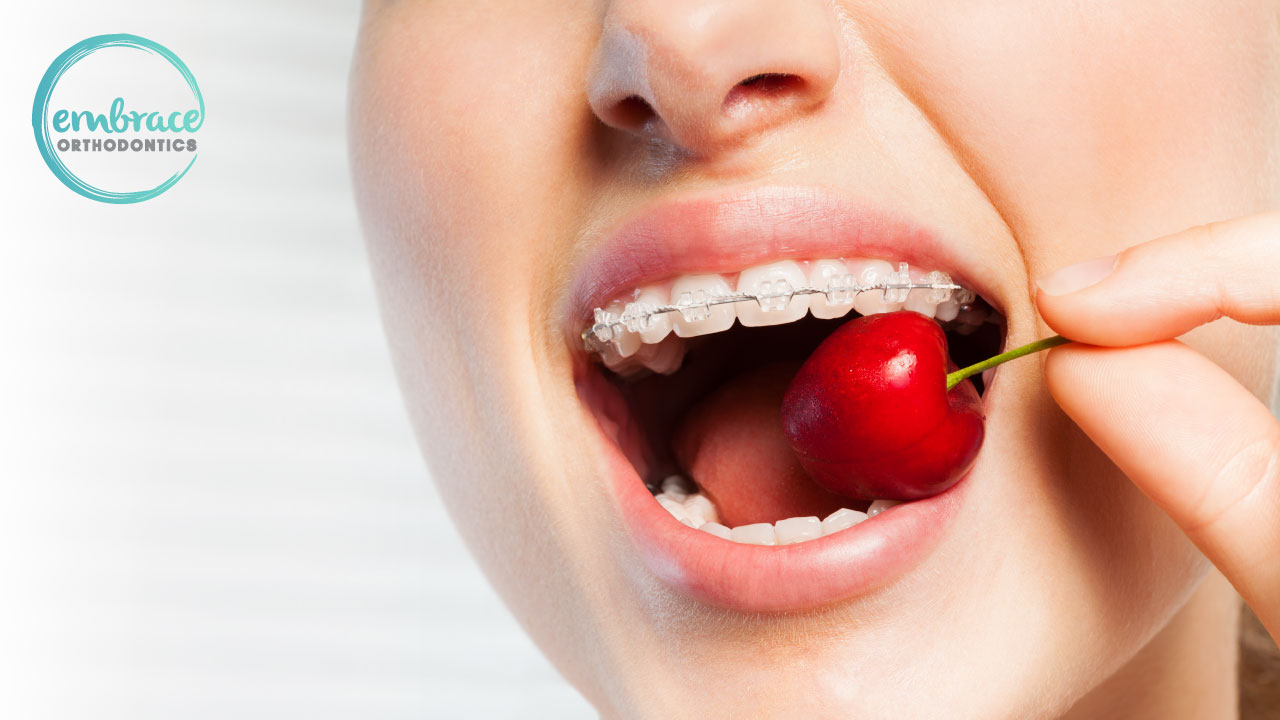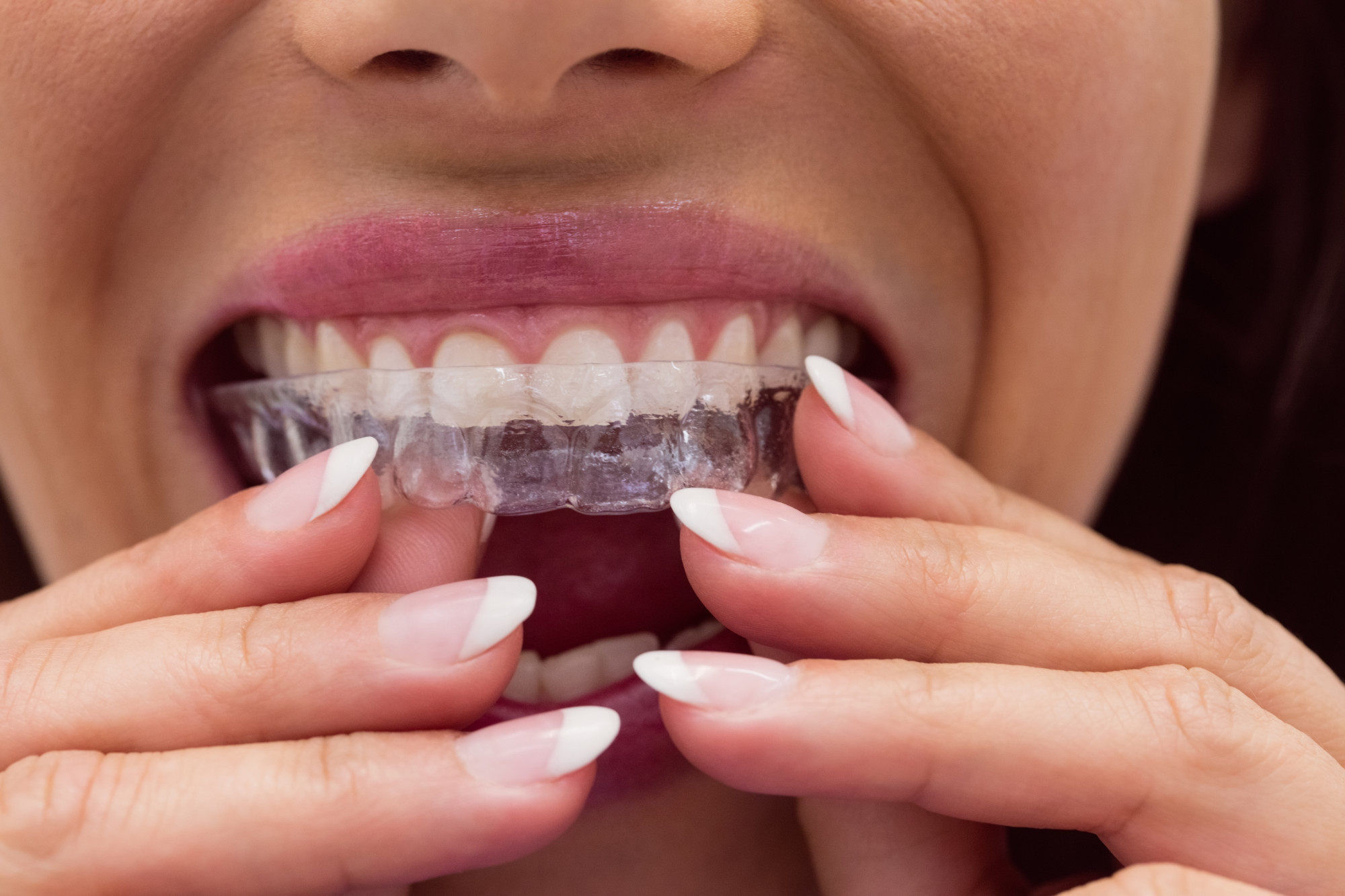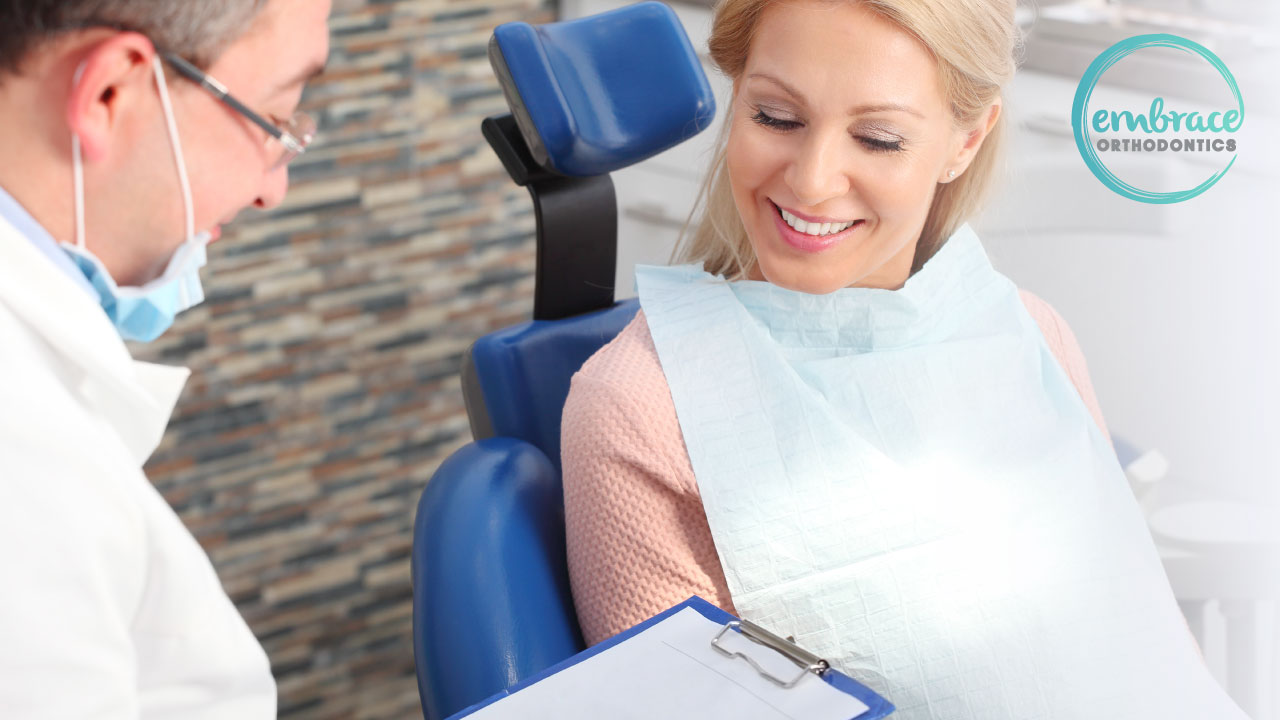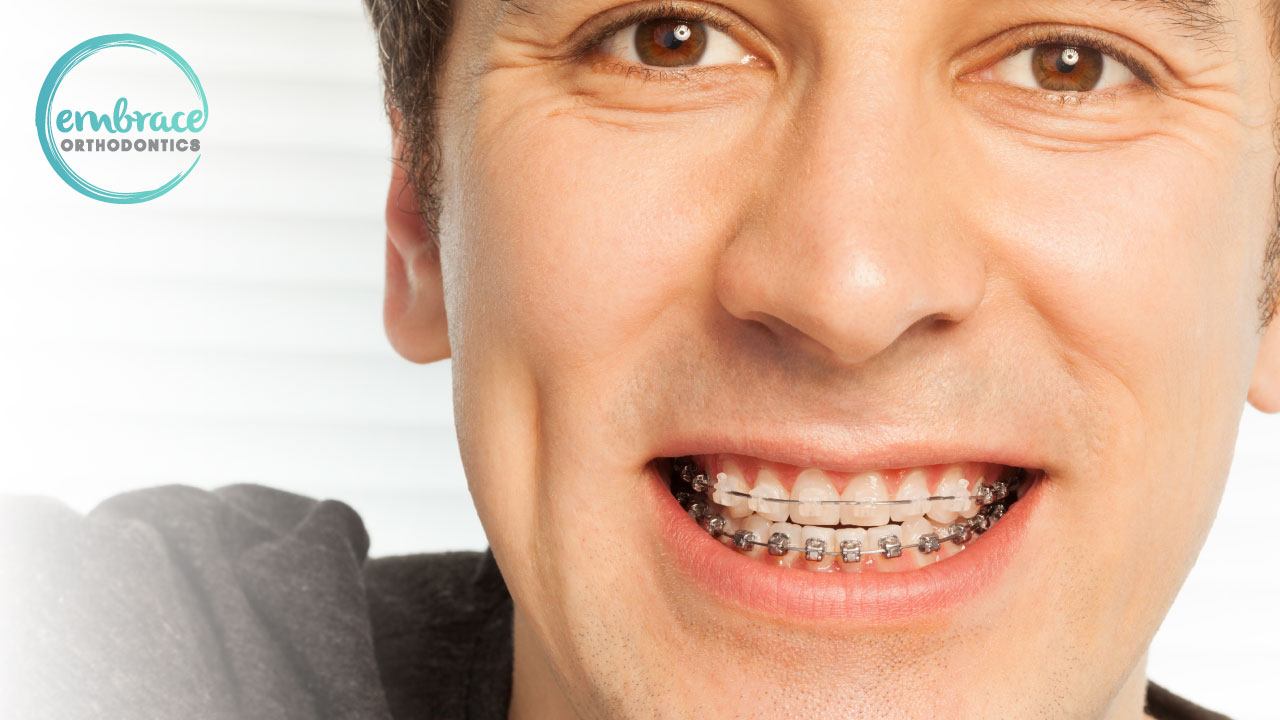Patients’ compliance with orthodontic treatment is the most crucial factor for achieving a successful result. Therefore, orthodontic treatment requires patients to adhere to mandatory guidelines articulated with the orthodontist’s plan.
Accordingly, along with their academic studies and practice, orthodontists acquire knowledge allowing them to plan treatment according to each malocclusion case, with a high level of certainty and effectiveness in its results.
Orthodontists can also determine approximate treatment duration times after a comprehensive evaluation of factors. These factors include an assumption of a patient’s willingness to cooperate.
However, sometimes patients fail to comply with practicing good oral hygiene habits, appliance wear, and appliance and appointment maintenance. Poor commitment to results derives from extending treatment duration and non-planned measures during orthodontic treatment.
For instance, studies reveal that reasoned actions might not be sufficient to attain a beautiful smile, leading patients to skip orthodontic visits or quit treatment. Also, failure to comply with a treatment does not significantly relate to factors such as age or gender.
Additionally, an orthodontic treatment’s functionality is highly dependent on the body’s response to applied strain. Furthermore, teeth displacement produces an inflammatory process that varies in each patient. Inflammatory adaptation and bone density also impact a treatment’s duration.
All factors summed up, and the attention to patient’s compliance to orthodontic treatment brought us to revise the importance of dietary restrictions as a measure to obtain fabulous results with orthodontic treatment.
This article addresses the food(s) a patient can and cannot eat during orthodontic treatment with braces and Invisalign.
What Can I Eat with Braces During Treatment?
Orthodontic treatment with braces includes a set of brackets cemented on each tooth. These brackets serve as clips to retain a U-shaped wire that resembles a jaw arch.
Appliances are sturdy and made of resistant materials. However, this does not mean they are indestructible. For example, brackets can fall, and wires might break, leaving pointy edges that can hurt the cheeks and gums.
Additionally, a loose bracket or a broken wire delays orthodontic treatment. Patients need to schedule an unprogrammed visit to get braces fixed. Depending on an orthodontist’s agenda, this usually takes one to two weeks.
Consequently, during orthodontic treatment, specialists recommend patients follow a diet that mainly includes soft and easy-to-chew foods. Here we have compiled a list of some easy to masticate foods that will help you have your treatment on track:
Cooked Vegetables
Raw vegetables are hard to bite. So, to make your veggies easy to chew, you can cook them in water for a few minutes trying not to overcook them, so they retain their nutritional properties.
Soft Fruits
Some fruits, like raw apples, are hard to bite. Fortunately, you can find many nutritious fruits like papaya, and most berries (blueberries, raspberries, and blackberries), that you can eat without a problem.
You can also opt to eat apples, pears, or other fruits with some extra caution. You just have to cut these fruits into small “bite” sizes before eating them. Just make sure you softly chew them with your molars.
Dairy Products
Dairy is by far the most recommended type of food you can eat during orthodontic treatment. This is because dairy products contain calcium, a key component of teeth and bones, and are also soft and easy to chew.
Let’s start with milk and yogurt. The best part is you don’t need to chew them, but you still have nutritious and healthy food. Cheese is soft and easy to bite, but remember, cheese might get trapped between your brackets and wires.
Lean Tender Meat or Tofu
There is a myth about eating meat during orthodontic treatment. Actually, you don’t have to abstain from meat; you just have to be cautious. You can buy lean and tender meat without bones and cut it into small pieces.
There is no discernable restriction on meat. Patients can eat beef, pork, chicken, and fish during orthodontic treatment. If you are a vegetarian, the good news is you can eat tofu.
Nut Spreads
Nuts are hard to bite and get incrusted in the intricate spaces of brackets and wires. Yet, nuts might not break wires, but the force exerted at biting might bend a wire, producing unnoticeable damage to the treatment.
So, if you are a fan of peanuts, trail mixes, or any other nuts, opt for a nut spread like peanut butter or crush your nuts before eating them.
What Can I Eat with Braces the First Week?
Patients tend to feel discomfort and experience extra sensitivity the first three to four days after getting their brackets. However, this feeling is normal and should recede after the first week.
During the first week and after adjustments, teeth sensitivity increases, making it hard to bite and chew. Therefore, orthodontists recommend patients recur to foods that are extra easy to bite.
We include a list of foods you can eat those days when your mouth is sensitive, and you might also continue eating them throughout the entire orthodontic treatment:
- yogurt;
- soups;
- scrambled eggs;
- oatmeal;
- mashed potatoes;
- pasta;
- seafood;
- moist desserts and;
- soft cooked grains, soft crusted bread.
What Not to Eat During the First Week or After Adjustments to Braces
During the first week after you have your brackets cemented and wires adjusted for the first time, you might experience mild soreness and discomfort. The strain exerted over teeth produces an unpleasant sensation.
The inflammatory process and sensitiveness in gums and teeth recede by day fourth. However, during this time, the sole act of biting exacerbates the discomfort. Therefore, you might need to be cautious chewing to minimize soreness.
In addition to these measures, orthodontists recommend avoiding certain foods that undoubtedly worsen this scenario. Here we compiled a short list of foods you need to avoid when first getting your braces on and after adjustments:
Hot, Spicy, and Citrus Foods
Your gums are slightly swollen. So, eating hot, spicy, or citric foods worsen the inflammation. In addition, your level of tolerance to these foods reduces dramatically during the first four days of treatment with braces.
Frozen Treats and Ice Cream
Have you ever eaten ice cream and felt this random and acute pain that travels from your teeth to your head? Chances are this pain might stop being random on the first days after braces.
Your teeth are extra sensitive, so we recommend you skip any frozen food for a few days. After passing this stage, you will feel alleviated, and you will be able to resume getting your favorite ice cream or frozen treat as wished.
Bread or Thick Rolls
The first strain produced by wires adjustment affects not only your teeth but also your jaw. As a result, patients have difficulty opening their mouths in the first two to three days.
Eating bread and thick rolls requires inevitably opening your mouth to the fullest. Adding up, bread and rolls are hard to bite, causing an annoying ache to the back of your mouth. Fortunately, this molesting sensation doesn’t last long.
Thick Meats or Meat to the Bone
Meats to the bone or thick meats should be crossed out of your diet, especially the first days after an orthodontist has put braces on. Meat is hard to bite, triturate, it involves chewing many times, and worst of all, it might damage your braces.
What Not to Eat During the Entire Orthodontic Treatment With Braces
Hard to Bite Fruits and Vegetables
It is common to have a loose bracket right after biting an apple. This is because a first bite occurs with the touching edges of teeth and the front ripping out the apple. Brackets cemented in the teeth’s front serve to align them, not to rip off foods. So, there is a high chance for a bracket to fall off.
The Design of Brackets
Examples of hard-to-bite fruits include pears and peaches, but you might also include vegetables like carrots. Once again, you can cut these delicious and nutritious foods into small pieces and chew them with your molars.
Nuts and Nuts Assortments
Nuts might be a perfect size so that you can chew them with your back teeth. However, they are rough to bite. The main problem with nuts is the force applied while chewing that might derail a wire.
A derailed wire might pass unnoticed but subtly moves orthodontic treatment backward. Also, orthodontic treatments include elastic rubber bands that can break, delaying the orthodontic alignment process.
Unground Whole Grains and Seeds
One of the most critical patient compliance factors during orthodontic treatment is practicing enhanced oral hygiene habits. Unground Whole Grains have a texture that, after being triturated, leaves traces that hide between brackets and wires.
Patients are encouraged to brush their teeth with a soft bristle toothbrush with a bit of paste to see and identify parts in which foods are stuck. Patients should also use a waxed self-threading or interdental flosser to optimize results.
Failing to practice enhanced oral hygiene habits might result in tooth decay leading to caries or gum disease. These dental illnesses include inflammatory processes that prevent teeth from moving.
If teeth can’t move, then braces and wires in the affected area might need to be removed to treat a condition. Unfortunately, caries treatment is not immediate and might require a couple of unprogrammed visits, delaying resuming orthodontic treatment.
Hard Crusted Bread
Many people love to eat pizza to the crust or have a bagel during breakfast. However, patients are encouraged to restrict crunchy and hard-to-bite foods to the most possible. Though, if you are not willing to cross out a bagel from your grocery list, try warming it for a few seconds in a microwave to get it soft and easy to bite.
Other Foods You Should Avoid With Braces
So far, we have talked about general types of foods. However, the list of foods you might need to draw away off encompasses other specific treats. Therefore, we include a short list of specific foods you need to revise before grocery shopping:
- popcorn:
- ice;
- chewing gum (except ADA-approved sugar-free gum);
- hard candy;
- chewy candy;
- hard crackers;
- pretzels and;
- chips.
Last but not least, sugar-added foods and drinks are teeth killers. Bacteria loves sugar and starchy residues that remain or stick in teeth after eating or drinking. Bacteria process these residues turning them into acids that erode enamel.
As the enamel erodes, teeth get vulnerable, and bacteria can penetrate further layers, sometimes reaching the pulp deriving in costly interventions like root canals or even losing a piece of a denture.
Practicing exceptional oral hygiene habits during orthodontic treatment is vital as appliances accumulate more food particles than people with no braces. However, late technology advancements have led to the development of orthodontic treatment(s) without the hassle of dietary restrictions.
What Can I Eat During Invisalign Orthodontic Treatment?
Invisalign is a renowned trademark of clear orthodontic appliances. Invisalign consists of a set of clear, almost invisible trays that are removable. Yes, they can be detached every time you have a meal.
Consequently, there is no diet restriction for patients wearing Invisalign trays. Though, this does not, by any means, imply you can eat any food with your appliances (trays) on.
Biting and chewing while wearing clear appliances damage the intended structure that molds your smile, delaying treatment times as you might need to visit your orthodontists for an evaluation and wait for a new set of trays to arrive.
Also, wearing Invisalign appliances does not mean you can skip good oral hygiene habits. In fact, you need to adopt some less meticulous steps than with braces to your hygiene routine, which is still vital for a successful result.
In short, wearing clear appliances requires patients to dissolve tablets containing cleaning agents in water and soak the trays for fifteen minutes at night before wearing them again.
During the day, patients are encouraged to use an extra soft-bristled toothbrush to clean their appliances and to rinse them thoroughly before placing them back over their teeth.
Finally, even though there are no diet restrictions while wearing Invisalign, it is specifically recommended to avoid drinking naturally or artificially colored drinks, especially coffee and dark sodas, while wearing appliances.
